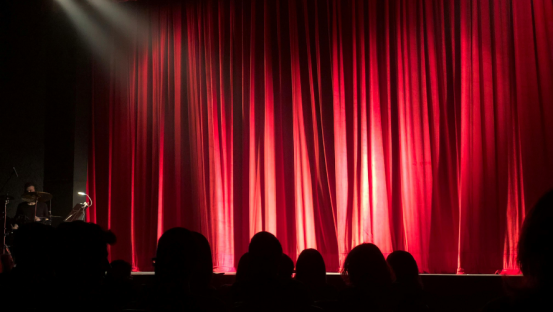Speak volumes with your silence: 10 ways to use pauses

Purposeful pauses can greatly engage your audience.
When you speak in a steady stream without pauses, your audience has to keep up with you: this becomes a near impossible task as there is no time to reflect, make connections or evaluate what you are saying.
Using pauses gives your audience time to think about your message, and start making meaningful connections with the message.

These connections will be the basis of their engagement.
This article will give you an overview of the where and how pauses can connect you with your audience and allow your talk to have a greater impact.
Pauses and the effect on short term memory
Our short term memory can only hold a few pieces of information at a time, for only about 30 seconds. If you are going to rapid-fire information, without a pause, you hinder your audience’s ability to retain what you are saying, wasting your time and theirs.

By spreading out your information into chunks with pauses in between, you allow the minds of your audience members to absorb each piece.
Pauses are crucial if your want to keep your audience engaged, with the ability to retain your message.
Create a better flow by separating your talk into bite-size chunks
Many speakers can get up on stage and recite their whole talk as one run-on sentence, instead of pausing for ‘punctuation’ breaks.
They use a steady stream of “ands” to link each idea.

Imagine you were going to read an article or a book that was one long continuous sentence: it would be exhausting.
It is the same feeling when listening to a talk.
Pauses act as punctuation in your talk. Give a second for a comma, a moment hold for a period, and full-blown 3-second pause when it’s time to move to the next idea: without them, your talk will be overwhelming.
Let’s take a quick look at what we mean when we talk about moving to the next idea.

When you switch between the introduction to the body of your talk, between the main points, and the conclusion, you are jumping from one idea to the next.
Pausing here will give your audience the heads-up that something new is coming, let them digest what they’ve just heard, and prep for what is coming up next.
Draw attention and emphasis points
One of the best ways to use purposeful pauses is to emphasize certain points in what you are saying.
Think about the key message. What is the one thing you want your audience to take away with them?
Before you state this point, give a pause. Then after you’ve said it, pause again. This bookend of pauses will ensure that your audience pays attention and retains the message.

The first pause will build anticipation. It creates a mental flag, saying “Hey! Stop for a second! The speaker has stopped, what is happening? Is something important coming up?”
Then you drop your point.
The second pause will let your audience reflect for a moment on what you’ve just said. They will be able to relate to it, matching it with their own knowledge base or memories. It gives them a second to process it, and this process will help them retain the info.
Use this pausing technique for all critically important points in your talk.
There are a handful of other places you can use pauses in your talk to build engagement, check our list of ten types below:
10 Types of pauses and when to use them:

1. The vital information pause
Use a pause to give your listeners a moment for the vital information you just delivered to sink in.
2. Dramatic pause
Build a bit of anticipation. Dramatic pauses is used whenever you want to generate some revved up suspense.
3. New visual pause
Pause when switching to a new slide or visual. Your audience will be focusing on this either way, give them a moment before you continue talking.
4. “I’m in thought” pause
Use to show the audience that the next part was something you put a lot of thought into. A revelation.
5. Emphasis Pause
Draw attention to a keyword or phrase by pausing immediately before and immediately after the word (or phrase).
6. Rhetorical question pause
Let the audience answer the question in their minds by pausing for a moment after asking the question.
7. Punchline Pause
Pause immediately before and after your punch line to create heightened anticipation and let them release their laughter.
8. Paragraph pause
Use longer pauses in your speech whenever you are transitioning from one major idea or point to the next.
9. Sentence pause
Stop connecting sentences with “and” indefinitely. At the end of a sentence, give a pause before moving on to the next.
10. Comma pause
Breaking your talk into a series of short clauses, and breathe.
If you are an experienced speaker, which are some of the ways you use pauses? We are always looking for new insights and would love to hear from you. Please contact us here.
Are you looking for more speaking and training opportunities? SpeakerHub is the fastest growing network of speakers and trainers, connecting presenters with event organizers from around the world. Find out more here.







